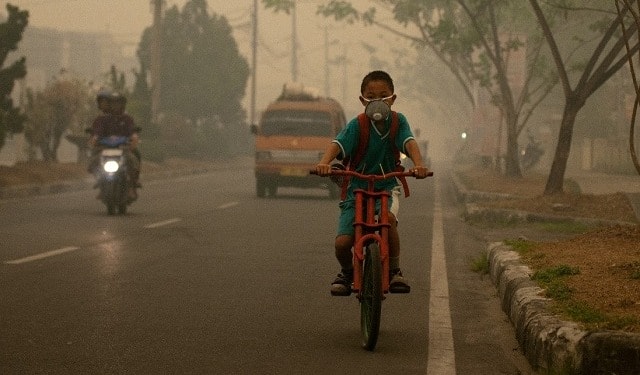Researchers have published the State of Global Air (SoGA) 2024 report, which presents data on exposures to and health impacts of common air pollutants, including fine particulate matter (PM2.5), ozone (O3), and, for the first time, nitrogen dioxide (NO2), from 1990-2021. The report finds that while air pollution was the second largest risk factor of death for children under five in 2021, the death rate from air pollution for this group has decreased by 53% since 2000.
The report is a collaborative initiative of the Health Effects Institute (HEI) and the Institute for Health Metrics and Evaluation’s (IHME) Global Burden of Disease project. Its 2024 edition was produced in collaboration with the UN Children’s Fund (UNICEF).
The report finds that air pollution was the second largest risk factor for death in 2021 after high blood pressure, accounting for 8.1 million deaths globally. Of these, 58% were from ambient PM2.5, 38% from household air pollution, and 6% from ozone. Countries in South Asia and Africa bore the highest burden of disease.
The report’s findings show that while ambient PM2.5 levels are decreasing or stabilizing in many regions, populations in low-income countries (LICs) and middle-income countries (MICs) are exposed to up to four times higher levels of ambient PM2.5.
Since 2000, the disease burden for household air pollution has decreased, driven largely by reductions in exposure in China and South Asia. Deaths from household air pollution dropped 36%.
Related Articles: Air Pollution is Leading Environmental Killer, Claiming 7 Million Lives | The Invisible Killer Lurking in the Air of Our Cities | Air Pollution in Europe: Exposure Kills 1,200 Children Every Year | Air Pollution ‘Significantly Associated’ With Breast Cancer Incidence | How Air Pollution Could Be Affecting Antibiotic Resistance
According to the report, air pollution is responsible for 30% of deaths from lower respiratory infections, 28% of deaths from ischemic heart disease, and 48% of deaths from chronic obstructive pulmonary disease. Its findings reveal that lower respiratory infection deaths are declining in most regions.
In children under five, air pollution is only second to malnutrition in terms of posing global risk factors for death. In South Asia and East, West, Central, and Southern Africa, air pollution is responsible for almost 30% of all deaths in the first month after birth, the report finds.
“Air pollution has enormous implications for health,” said Health Effects Institute (HEI) President Elena Craft. “We know that improving air quality and global public health is practical and achievable,” she underscored.
The global estimates presented in the report seek to support local and regional data and evidence-based decisions, policies, and actions.
** **
This article was originally published by the International Institute for Sustainable Development (IISD) and is republished here as part of an editorial collaboration with the IISD.
Editor’s Note: The opinions expressed here by the authors are their own, not those of Impakter.com — Cover Photo Credit: Aulia Erlangga/CIFOR.













